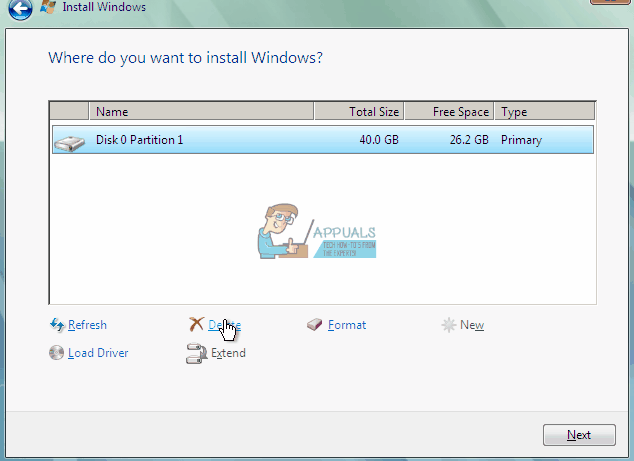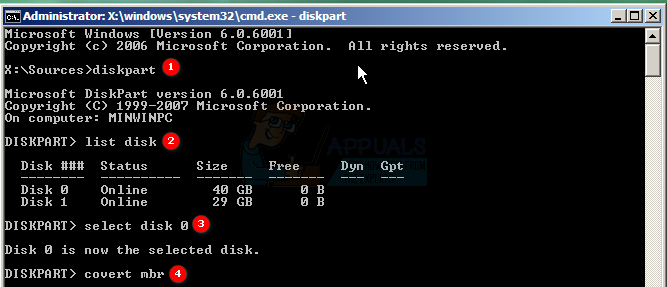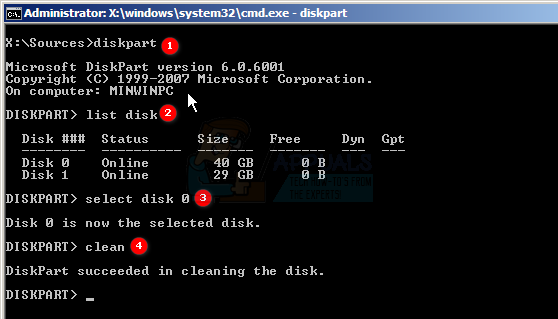How to Fix Windows Cannot Be Installed on Drive (0)
To install your operating system, you need a drive or partition available to copy all of the files. This drive or partition needs to have a partitioning system. This system can be saved in two different ways: MBR, which stands for Master Boot Record, or GPT, which stands for GUID Partitioning Table.
Your partitioning system is installed based on your booting options and your operating system. If your computer is booting in Legacy BIOS, the MBR system will be installed. However, if you boot in UEFI mode, the GPT system will be installed. There’s a way to differentiate between both at the moment of installation: the first one (Legacy BIOS) will create a 100MB partition for this table, whereas the latter (UEFI) will create a 500MB partition. This partition will automatically be hidden by the system.
Unfortunately, both partitioning systems are not compatible, and during installation, if not set up properly, you may encounter an error stating that Windows cannot be installed on your disk. Please see the following for how to resolve this issue.
Method 1: Erase your drive to avoid incompatibility with previous partitioning systems
- Boot your computer with the Operating System installer.
- Start the installation process until you get to the system partitioning part.
- Select the primary partition where you want to install Windows, click on ‘Drive Options‘, then click on ‘Delete.
- Once your Disk has only one entry for unallocated space, click on New.
- Windows will alert you about a new partition being created; select ‘Yes‘ to confirm. Windows will create a partition of the specified size. This could take 100MB or 500MB, depending on the partitioning system applied.
- Select the partition where you want to install the system and press next.

Method 2: Select the correct option for booting, Legacy BIOS or UEFI
- Turn on your computer and immediately press F2, F12, DEL, or F10 to access your BIOS Setup. The key to access your BIOS might vary depending on your PC manufacturer.
- Once in the BIOS/UEFI search for Booting Options (refer to your PC manual for exact location).
- Look for an option called UEFI/BIOS Boot Mode and select either Legacy or UEFI. If your hard drive was previously using GPT and you are currently booting in Legacy BIOS, there could be compatibility issues, and the inverse also stands. If you see…
- Once you have changed the Boot mode, restart your computer and boot from your installation media.
Method 3: Change the partitioning table from GPT to MBR (Please backup your data if any)
- Boot from installation media.
- Click install but don’t continue with the process, instead, press Shift + F10 to open the command prompt.
- Type diskpart and then type list disk.
- Search for the disk you wish to convert and type ‘select disk 0‘. (Replace ‘0’ with the number of the disk you want to convert).
- Type ‘convert mbr‘, and then type ‘quit‘.
- Continue with the installation process.

Method 4: Erase the partitioning system through the command prompt
- Boot from your installation media.
- Click install but don’t continue with the process, instead, press Shift + F10 to open the command prompt.
- Type diskpart and then type list disk.
- Search for the disk you wish to convert and type ‘select disk 0‘. (Change 0 to the number of the disk you want to convert).
- Type ‘clean‘ and wait until it’s done, then type ‘exit‘.
- Continue with the installation process.
